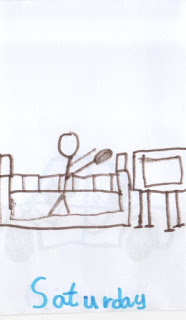- Many are the articles and books that have been written on teaching literacy to very young learners in ESL. As I have realised, though they might be extremely helpful, you might find that sometimes theory doesn't apply to practice. This year, my second grade has put in some amazing effort to grasp letter formation and sound, word meaning and sentence structure in English, while struggling with their native language as well. We sometimes think: "Why can't they read fluently yet?", "Why is their handwriting still sloppy?", "Why can't they spell every single word I have taught them?" As teachers we always evaluate our work in terms of our goal, but we sometimes forget the distinction between Competence and Performance. Are we pushing our students too much? Does the education system allow them the time they need to internalise and store information properly, in order to be able to access it and use it appropriately? Looking back I think that my students have done an amazing job.
- What follows is short presentation of their journey this year. I haven't got all the material we covered scanned yet, so I will be adding things to this post all the time. This presentation includes the main chore of our work, starting with letter level, to word level and sentence structure. I am really proud of the work they have done and the ground they have covered.
Letter Level

- In the beginning we practised letter formation and sound using our class Alphabet book. For extra practice we also worked in their notebooks. The first notebook included letter formation instructions, letter writing and finally sentence writing practice. Though the children were not always capable of comprehending the sentence, it provided them with fine motor skills training and helped them understand the spatial relation of the letter we learnt to the other letters.
- There are many handwriting practice worksheet generators on line that one can use to produce extra material. We used http://www.handwritingworksheets.com/. In the weeks to come I will be adding sample work from their folders so you can have an idea of what we did.
Word Level
- This was definitely more fun. It included handwriting practice, but mostly word - picture association, which helps in retention. We would then practise the new words through songs and games.
- Our picture dictionaries: I made them some fairly simple handwriting handouts that we use as a picture dictionary when they can't remember word meaning and spelling.
- In the first box, they simply trace, then they copy and finally they draw the new word.
- We also made Word Books that included the vocabulary of our lessons. What follows is a sample from one of our earlier books, "The Days of the Week."
- This post is getting longer than I expected it to be and I surely don't want to tire you. In my next post about Teaching Literacy to Non-native speakers I am going to talk about our work in sentence level. Stay tuned for more photos of our work and some reading samples of my second grade!
Non-native Speaker Literacy 2nd part:
Sentence Structure and Comprehension.





















No comments:
Post a Comment